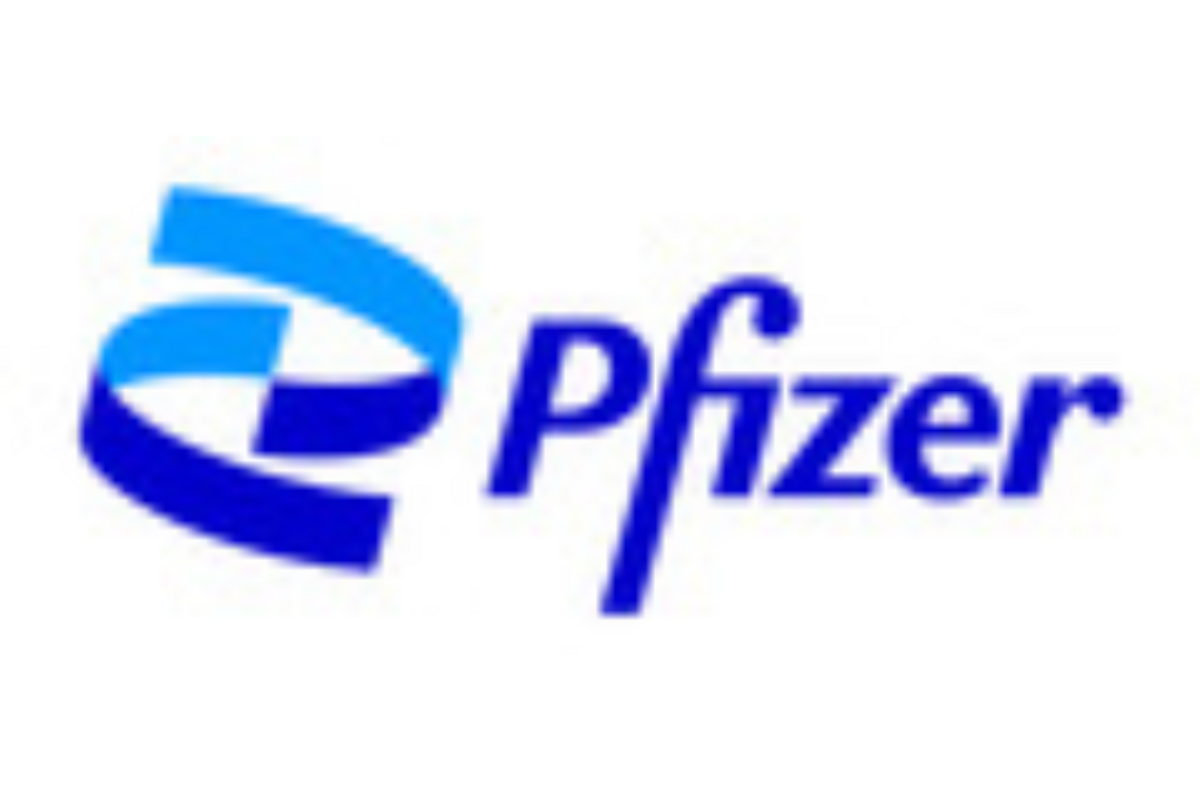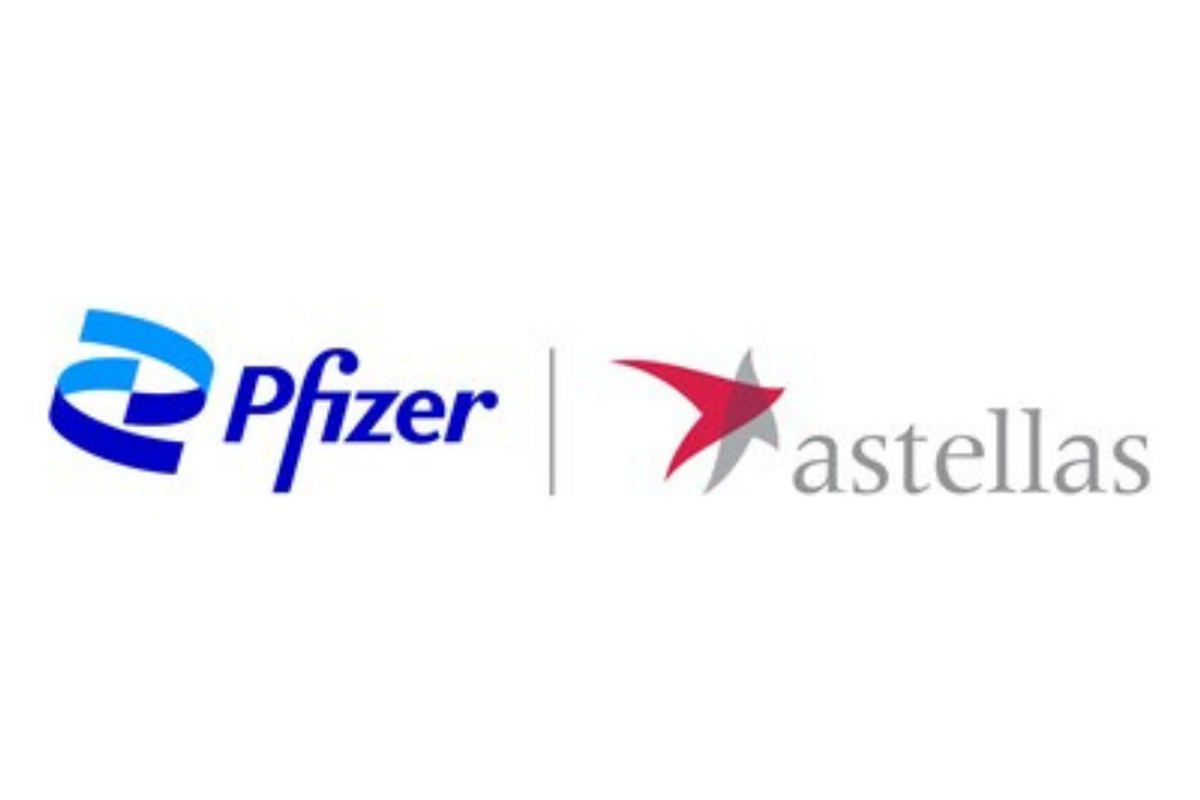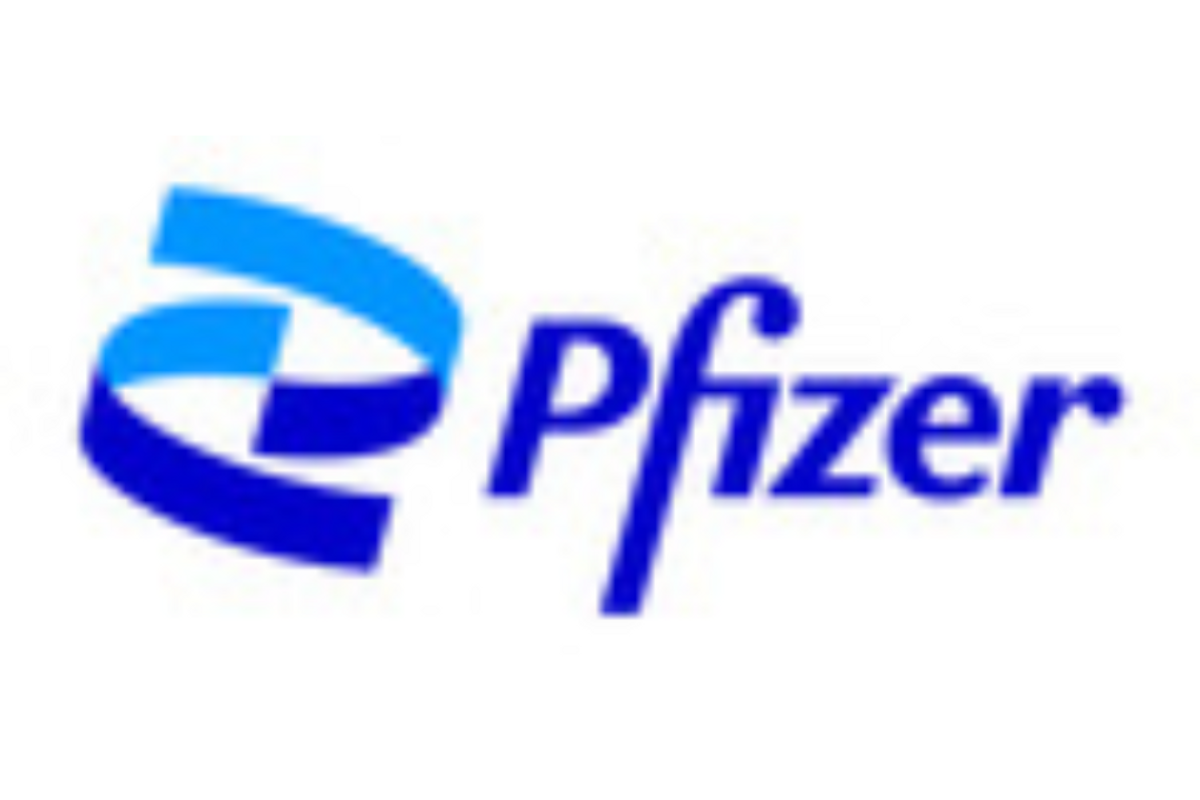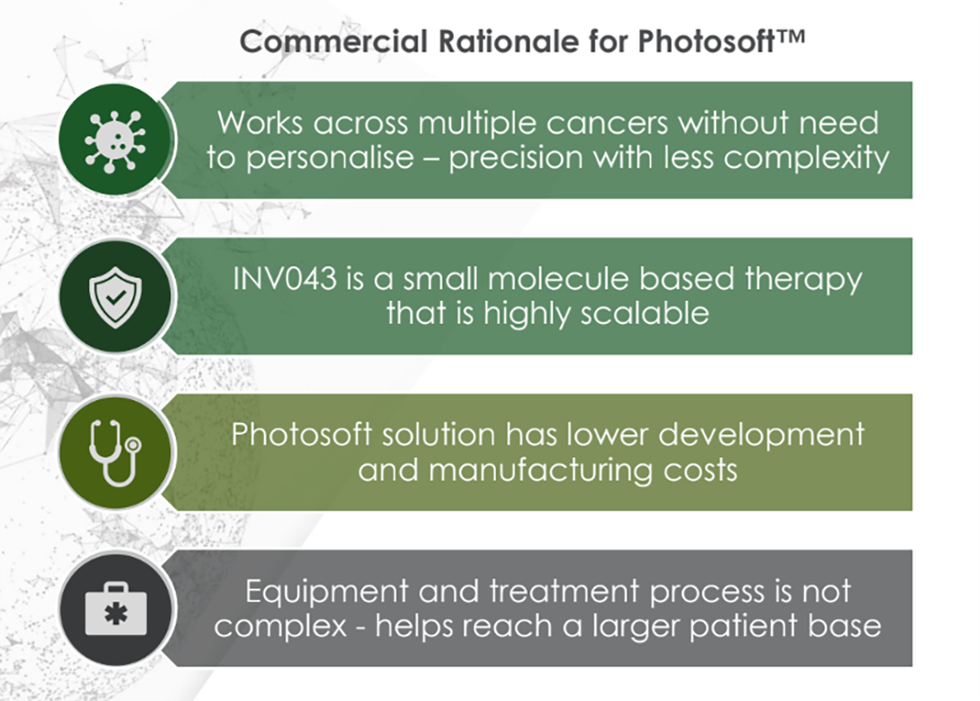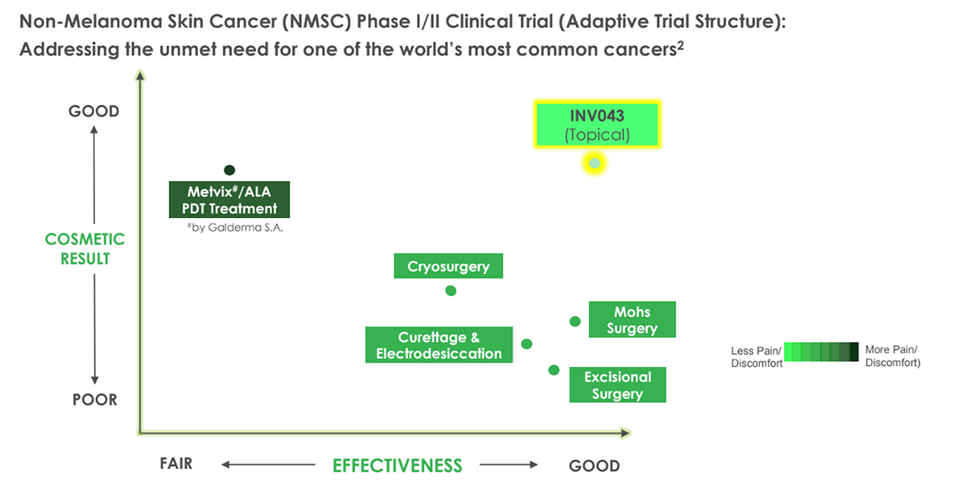Data demonstrate diversity of vaccine and anti-infective portfolio and cutting-edge scientific approach to battling viral and bacterial infections
Presentations of interest include a late-breaking abstract with the first full data of the efficacy and safety of Pfizer's bivalent respiratory syncytial virus (RSVpreF) vaccine candidate in older adults; and new data regarding PAXLOVID™ (nirmatrelvir [PF-07321332] tablets and ritonavir tablets), including its effect on COVID-19-related hospitalizations and other medical visits
Pfizer to host "RSV Data and COVID Vaccine Commercial Update" call with analysts at 4:30 p.m. (EDT) on October 20, 2022
Pfizer Inc. (NYSE: PFE) will share data across its expansive infectious disease portfolio, including company-sponsored and collaborative research studies, spanning both licensed and investigational vaccines, and antibiotic and antiviral therapies at IDWeek 2022 held in Washington, D.C. October 19-23, 2022. Data from 35 abstracts involving Pfizer vaccines and anti-infective therapies will illustrate the diversity of the portfolio and the company's cutting-edge scientific approach. This will include a late-breaking presentation of the full data from its Phase 3 (NCT05035212) RENOIR ( R SV vaccine E fficacy study i N O lder adults I mmunized against R SV disease) clinical trial, investigating its bivalent RSV A and B, stabilized RSV prefusion F subunit vaccine candidate, RSVpreF, when administered to adults 60 years of age and older. These data will also be presented on October 20, 2022, to the U.S. Centers for Disease Control and Prevention's (CDC) Advisory Committee on Immunization Practices (ACIP).
"The data presented at this year's IDWeek showcase the breadth of Pfizer's vaccine and therapeutic research and development portfolio and our continued commitment to working to overcome infectious diseases that still present a serious health risk," said Annaliesa Anderson, Ph.D., Senior Vice President and Chief Scientific Officer, Vaccine Research and Development, Pfizer. "We look forward to both sharing our exciting data, as well as connecting with the scientific community to determine how we can continue to work to bring transformative solutions to thwart infectious diseases."
The research to be presented includes new insights on bacterial and viral infections, including Lyme disease and C. difficile . Additionally , presentations will include Pfizer's licensed vaccine, PREVNAR 13 ® (Pneumococcal 13-valent Conjugate Vaccine [Diphtheria CRM197 Protein]), and its investigational vaccine candidates RSVpreF and Group B Streptococcus , GBS6. Beyond vaccines, Pfizer is also presenting new data regarding PAXLOVID™ (nirmatrelvir [PF-07321332] tablets and ritonavir tablets), its authorized oral treatment for COVID-19.
Key Pfizer sponsored, investigator-sponsored and collaborative research oral and poster presentations leveraging the depth of Pfizer's scientific advances include:
- An oral presentation on the effect of nirmatrelvir/ritonavir versus placebo on COVID-19 related hospitalizations and other medical visits
- A poster presentation on sustained alleviation and resolution of targeted COVID-19 symptoms with nirmatrelvir/ritonavir versus placebo
- A poster presentation of a Phase 2 study evaluating the safety, tolerability, and immunogenicity of a booster dose of a Group B Streptococcus vaccine
Details for the Pfizer-sponsored, investigator-sponsored and collaborative research oral and poster presentations are below:
| Title/Abstract Number | Presenting Author/Type | Date/Time (EST) | Location |
| ORAL PRESENTATIONS |
|
|
|
| 786 - Effect of Nirmatrelvir/Ritonavir versus Placebo on COVID-19─Related Hospitalizations and Other Medical Visits | Jennifer Hammond, PhD | Oct 20 3:30 – 3:45 PM US ET | 147 AB |
|
91 - Establishing Proof of Concept for a Bivalent RSVpreF Subunit Vaccine for Maternal Immunization |
Kimberly J. Center, M.D. |
Oct 20 10:30 – 10:45 AM US ET |
144 ABC |
| LATE BREAKING VACCINE STUDIES |
|
|
|
| LB748 - Efficacy And Safety Of Bivalent Respiratory Syncytial Virus (RSVpreF) Vaccine In Older Adults | Edward E. Walsh, MD | Oct 20 2:21 – 2:33 PM US ET | 209 ABC |
| POSTERS - PFIZER PRESENTING |
|
|
|
| COVID-19 |
|
|
|
| 1156 - Sustained Alleviation and Resolution of Targeted COVID-19 Symptoms with Nirmatrelvir/Ritonavir versus Placebo | Jennifer Hammond, PhD | Oct 21 12:15 – 1:30 PM US ET | Hall B + C |
| 1077 - Understanding the Psychosocial Burden Associated with Hospitalization Among Adults Diagnosed with COVID-19 in the United States | Wajeeha Ansari, MPH | Oct 21 12:15 – 1:30 PM US ET | Hall B + C |
| C. difficile |
|
|
|
| 117 - Preferences for Clostridioides difficile Vaccine Attributes Among Adults in the United States | Jeffrey T. Vietri, PhD | Oct 20 12:15 – 1:30 PM US ET | Virtual |
| 393 - Healthcare and Out-of-Pocket Costs Associated With Clostridioides difficile Infection Among US Adults 18-64 Years of Age | Holly Yu, MSPH | Oct 20 12:15 – 1:30 PM US ET | Hall B + C |
| 396 - Incidence and Attributable Mortality of Clostridioides difficile Infection Among US Adults 18-64 Years of Age | Jennifer Judy, MS, PhD | Oct 20 12:15 – 1:30 PM US ET | Hall B + C |
| 387 - Differences in frequency of C. difficile infection testing of inpatients with diarrhea at selected acute care hospitals in NY and GA, 2020 | Scott Fridkin, MD | Oct 20 12:15 – 1:30 PM US ET | Hall B + C |
| 394 - Impact of Misdiagnosis of Clostridioides difficile Infection (CDI) by Standard-of-care Specimen Collection and Testing on Estimates of Hospitalized CDI Incidence Among Adults in Louisville, Kentucky, 2019-2020 | Frederick Angulo, DVM PhD | Oct 20 12:15 – 1:30 PM US ET | Hall B + C |
| Pneumococcal Disease |
|
|
|
| 576 - Burden of Pneumococcal Disease Due to Serotypes Covered by the 13-Valent and New Higher-Valent Pneumococcal Conjugate Vaccines in All Children and Children at Risk in the United States | Liping Huang, MD, MA, MS | Oct 20 12:15 – 1:30 PM US ET | Hall B + C |
| 586 - Systematic Literature Review of the 13-valent Pneumococcal Conjugate Vaccine (PCV13) Effectiveness Against Invasive Pneumococcal Disease in Children Globally | Johnna Perdrizet, MPH | Oct 20 12:15 – 1:30 PM US ET | Hall B + C |
| Lyme Disease |
|
|
|
| 1351 - A Retrospective Database Study of Lyme Borreliosis Incidence and Distribution in Poland from 2015 to 2019 | James Stark, Ph.D. | Oct 21 12:15 – 1:30 PM US ET | Hall B + C |
| 1352 - Exploring spatial and temporal trends in the incidence of Lyme borreliosis in Finland using surveillance data, 2015-2020 | James Stark, Ph.D. | Oct 21 12:15 – 1:30 PM US ET | Hall B + C |
| 1353 - Incidence of Lyme Borreliosis in Germany: Exploring Observed Trends Over Time Using Public Surveillance Data, 2016-2020 | James Stark, Ph.D. | Oct 21 12:15 – 1:30 PM US ET | Hall B + C |
| 1354 - Incidence, time trends and geographic distribution of Lyme neuroborreliosis in Denmark using public surveillance data, 2015-2019 | James Stark, Ph.D. | Oct 21 12:15 – 1:30 PM US ET | Hall B + C |
| 1361 - Lyme Borreliosis (LB) is a Significant Disease Burden in Germany: Estimated LB Incidence after Adjusting for Under-ascertainment by Public Health Surveillance, 2021 | Frederick Angulo, DVM PhD | Oct 21 12:15 – 1:30 PM US ET | Hall B + C |
| 1462 - Validating a claims-based algorithm for Lyme Disease in Massachusetts | Sarah J. Pugh, PhD, MPH | Oct 21 12:15 – 1:30 PM US ET | Hall B + C |
| Antimicrobial Surveillance |
|
|
|
| 659 - In Vitro Activity of Ceftazidime-Avibactam and Comparator Agents against Enterobacterales Collected from Patients with Bloodstream Infections (BSI) as Part of the ATLAS (India) Surveillance Program, 2019-2020 | Abhisek Routray, PhD | Oct 20 12:15 – 1:30 PM US ET | Virtual |
| Other |
|
|
|
| 2134 - A Phase 2 Study to Evaluate the Safety, Tolerability, and Immunogenicity of a Booster Dose of a Group B Streptococcus 6-Valent Polysaccharide Conjugate Vaccine (GBS6) | Babalwa Jongihlati, MD, MBA | Oct 22 12:15 – 1:30 PM US ET | Hall B + C |
|
2207 - Rates of Lower Respiratory Tract Infections Among US Adults Aged ≥18 Years With and Without Chronic Medical Conditions |
Kari Yacisin, M.D. |
Oct 22 12:15 – 1:30 PM US ET |
Hall B + C |
|
2208 - Rates of Medically-Attended RSV among US Adults: A Systematic Review and Meta-Analysis |
Farid L. Khan, MPH |
Oct 22 12:15 – 1:30 PM US ET |
Hall B + C |
|
106 - High Maternal Tdap Vaccine Uptake During Early Part of Vaccination Window: Implications for Future Maternal Vaccines |
Amy W. Law, PharmD |
Oct 20 12:15 – 1:30 PM US ET |
Hall B + C |
| POSTERS - PFIZER CO-AUTHORS |
|
|
|
| COVID-19 |
|
|
|
| 1068 - Prior SARS-CoV-2 Infection And Risk of Subsequent COVID-19-Related Hospitalization: A Test Negative Design | Khalel De Castro | Oct 21 12:15 – 1:30 PM US ET | Hall B + C |
|
1908 - Social Risk Factors for COVID-19-Related Hospitalizations in Adults |
Olivia D. Reese, BA |
Oct 22 12:15 – 1:30 PM US ET |
Hall B + C |
|
1934 - Association between Receipt of COVID-19, Influenza, and Pneumococcal Vaccination |
Chris Choi, BA |
Oct 22 12:15 – 1:30 PM US ET |
Hall B + C |
| RSV |
|
|
|
| 371 - Adding sputum and saliva to nasopharyngeal swab samples for PCR detection of Respiratory Syncytial Virus in adults hospitalized with acute respiratory illness may double case detection | Julio A. Ramirez, MD, FACP | Oct 20 12:15 – 1:30 PM US ET | Hall B + C |
| Antimicrobial Surveillance |
|
|
|
| 1717 - In Vitro Activity of Aztreonam-Avibactam Against Enterobacterales Isolated from Pediatric and Adult Patients Collected During the ATLAS Global Surveillance Program, 2017-2020 | Mark Estabrook, PhD | Oct 22 12:15 – 1:30 PM US ET | Hall B + C |
|
1719 - In Vitro Activity of Ceftazidime-avibactam and Comparator Agents against Enterobacterales and Pseudomonas aeruginosa Collected from Patients with Bloodstream Infections as Part of the ATLAS Global Surveillance Program, 2017-2020 |
Mark Estabrook, PhD |
Oct 22 12:15 – 1:30 PM US ET |
Hall B + C |
|
1720 - In Vitro Activity of Aztreonam-Avibactam and Comparator Agents Against Enterobacterales from Patients with Urinary Tract Infections Collected During the ATLAS Global Surveillance Program, 2017-2020 |
Mark Estabrook, PhD |
Oct 22 12:15 – 1:30 PM US ET |
Hall B + C |
|
1673 - In vitro Activities of Ceftaroline and Comparator Agents against Bacterial Pathogens Frequently Causing Community-Acquired Respiratory Tract Infections in Patients from a Global Population: ATLAS Surveillance Program 2017-2020 |
Meredith Hackel, PhD |
Oct 22 12:15 – 1:30 PM US ET |
Hall B + C |
|
1707 - In vitro Activities of Ceftazidime-Avibactam and Comparator Agents against Enterobacterales and Pseudomonas aeruginosa Collected |
Mark Wise, PhD |
Oct 22 12:15 – 1:30 PM US ET |
Hall B + C |
|
1708 - In vitro Activities of Ceftazidime-Avibactam and Comparator Agents against Enterobacterales and Pseudomonas aeruginosa Collected |
Mark Wise, PhD |
Oct 22 12:15 – 1:30 PM US ET |
Hall B + C |
|
1709 - In Vitro Activity of Ceftazidime-Avibactam and Comparator Agents Against MDR Enterobacterales and Pseudomonas aeruginosa Collected in Latin America, ATLAS Global Surveillance Program 2018-2020 |
Mark Wise, PhD |
Oct 22 12:15 – 1:30 PM US ET |
Hall B + C |
| 2043 - In Vitro Activity of Manogepix Against 2,810 Fungal Isolates from the SENTRY Surveillance Program (2020-2021) Stratified by Infection Type | Michael D. Huband, BS | Oct 22 12:15 – 1:30 PM US ET | Hall B + C |
Pfizer Conference Call
Pfizer Inc. invites Pfizer investors and the general public to view and listen to "RSV Data and COVID Vaccine Commercial Update," a webcast of a live conference call with investment analysts at 4:30 p.m. ET on October 20.
To view and listen to the webcast visit Pfizer's web site at www.pfizer.com/investors or directly at https://pfizer.rev.vbrick.com/#/events/c5b674a0-5663-4030-a863-16ecfb0a0f9b . Information on accessing and pre-registering for the webcast will be available at www.pfizer.com/investors beginning today. Participants are advised to pre-register in advance of the conference call.
You can listen to the conference call by dialing either 800-456-4352 in the United States or Canada or 785-424-1086 outside of the United States and Canada. The passcode is "48062." Please join the call five minutes prior to the start time to avoid operator hold times.
The transcript and webcast replay of the call will be made available on Pfizer's web site at www.pfizer.com/investors within 24 hours after the end of the live conference call and will be accessible for at least 90 days.
INDICATIONS FOR PREVNAR 13 ® IN THE U.S.
- PREVNAR 13 ® is a vaccine approved for adults 18 years of age and older for the prevention of pneumococcal pneumonia and invasive disease caused by 13 Streptococcus pneumoniae strains (1, 3, 4, 5, 6A, 6B, 7F, 9V, 14, 18C, 19A, 19F, and 23F)
- PREVNAR 13 ® is a vaccine approved for children 6 weeks through 17 years of age for the prevention of invasive disease caused by 13 strains of Streptococcus pneumoniae. It is also approved for children 6 weeks through 5 years for the prevention of otitis media (ear infection) caused by 7 of the 13 strains
- PREVNAR 13 ® is not 100% effective and will only help protect against the 13 strains included in the vaccine
PREVNAR 13 ® IMPORTANT SAFETY INFORMATION
- PREVNAR 13 ® should not be given to anyone with a history of severe allergic reaction to any component of Prevnar 13 ® or any diphtheria toxoid–containing vaccine
- Children with weakened immune systems (eg, HIV infection, leukemia) may have a reduced immune response
- A temporary pause of breathing following vaccination has been observed in some infants born prematurely
- The most commonly reported serious adverse events in infants and toddlers were bronchiolitis (an infection of the lungs) (0.9%), gastroenteritis (inflammation of the stomach and small intestine) (0.9%), and pneumonia (0.9%)
- In children 6 weeks through 17 years, the most common side effects were tenderness, redness, or swelling at the injection site, irritability, decreased appetite, decreased or increased sleep, and fever
- Adults with weakened immune systems (eg, HIV infection, leukemia) may have a reduced immune response
- In adults, the most common side effects (>5%) were pain, redness, and swelling at the injection site, limitation of arm movement, fatigue, headache, muscle pain, joint pain, decreased appetite, vomiting, fever, chills, and rash
- Ask your healthcare provider about the risks and benefits of PREVNAR 13 ® . Only a healthcare provider can decide if PREVNAR 13 ® is right for your child
Please see full prescribing information for PREVNAR 13 ®
PAXLOVID™ U.S. FDA Emergency Use Authorization Statement
PAXLOVID has not been approved but has been authorized for emergency use by FDA under an EUA, for the treatment of mild-to-moderate COVID-19 in adults and pediatric patients (12 years of age and older weighing at least 40 kg) with positive results of direct SARS CoV-2 viral testing, and who are at high-risk for progression to severe COVID-19, including hospitalization or death.
The emergency use of PAXLOVID is only authorized for the duration of the declaration that circumstances exist justifying the authorization of the emergency use of drugs and biological products during the COVID-19 pandemic under Section 564(b)(1) of the Act, 21 U.S.C. § 360bbb-3(b)(1), unless the declaration is terminated or authorization revoked sooner.
AUTHORIZED USE
The U.S. Food and Drug Administration (FDA) has issued an Emergency Use Authorization (EUA) for the emergency use of the unapproved product PAXLOVID for the treatment of mild-to-moderate coronavirus disease 2019 (COVID-19) in adults and pediatric patients (12 years of age and older weighing at least 40 kg) with positive results of direct severe acute respiratory syndrome coronavirus 2 (SARS-CoV-2) viral testing, and who are at high risk for progression to severe COVID-19, including hospitalization or death.
LIMITATIONS OF AUTHORIZED USE
- PAXLOVID is not authorized for initiation of treatment in patients requiring hospitalization due to severe or critical COVID-19
- PAXLOVID is not authorized for use as pre-exposure or post-exposure prophylaxis for prevention of COVID-19
- PAXLOVID is not authorized for use for longer than 5 consecutive days
PAXLOVID may be prescribed for an individual patient by physicians, advanced practice registered nurses, and physician assistants that are licensed or authorized under state law to prescribe drugs.
PAXLOVID may also be prescribed for an individual patient by a state-licensed pharmacist under the following conditions:
- Sufficient information is available, such as through access to health records less than 12 months old or consultation with a health care provider in an established provider-patient relationship with the individual patient, to assess renal and hepatic function; and
- Sufficient information is available, such as through access to health records, patient reporting of medical history, or consultation with a health care provider in an established provider‑patient relationship with the individual patient, to obtain a comprehensive list of medications (prescribed and non-prescribed) that the patient is taking to assess for potential drug interaction.
The state-licensed pharmacist should refer an individual patient for clinical evaluation (e.g., telehealth, in-person visit) with a physician, advanced practice registered nurse, or physician assistant licensed or authorized under state law to prescribe drugs, if any of the following apply:
- Sufficient information is not available to assess renal and hepatic function.
- Sufficient information is not available to assess for a potential drug interaction.
- Modification of other medications is needed due to a potential drug interaction.
- PAXLOVID is not an appropriate therapeutic option based on the authorized Fact Sheet for Healthcare Providers or due to potential drug interactions for which recommended monitoring would not be feasible.
PAXLOVID is not approved for any use, including for use for the treatment of COVID-19.
PAXLOVID is authorized only for the duration of the declaration that circumstances exist justifying the authorization of the emergency use of PAXLOVID under 564(b)(1) of the Food Drug and Cosmetic Act unless the authorization is terminated or revoked sooner.
IMPORTANT SAFETY INFORMATION
Drugs listed in this section are a guide and not considered a comprehensive list of all drugs that may be contraindicated with PAXLOVID. The healthcare provider should consult other appropriate resources such as the prescribing information for the interacting drug for comprehensive information on dosing or monitoring with concomitant use of a strong CYP3A inhibitor such as ritonavir.
PAXLOVID is contraindicated with drugs that are highly dependent on CYP3A for clearance and for which elevated concentrations are associated with serious and/or life-threatening reactions:
- Alpha 1 -adrenoreceptor antagonist: alfuzosin
- Antianginal: ranolazine
- Antiarrhythmic: amiodarone, dronedarone, flecainide, propafenone, quinidine
- Anti-gout: colchicine
- Antipsychotics: lurasidone, pimozide
- Benign prostatic hyperplasia agents: silodosin
- Cardiovascular agents: eplerenone, ivabradine
- Ergot derivatives: dihydroergotamine, ergotamine, methylergonovine
- HMG-CoA reductase inhibitors: lovastatin, simvastatin
- Immunosuppressants: voclosporin
- Microsomal triglyceride transfer protein inhibitor: lomitapide
- Migraine medications: eletriptan, ubrogepant
- Mineralocorticoid receptor antagonists: finerenone
- Opioid antagonists: naloxegol
- PDE5 inhibitor: sildenafil (Revatio ® ) when used for pulmonary arterial hypertension
- Sedative/hypnotics: triazolam, oral midazolam
- Serotonin receptor 1A agonist/serotonin receptor 2A antagonist: flibanserin
- Vasopressin receptor antagonists: tolvaptan
PAXLOVID is contraindicated with drugs that are potent CYP3A inducers where significantly reduced nirmatrelvir or ritonavir plasma concentrations may be associated with the potential for loss of virologic response and possible resistance. PAXLOVID cannot be started immediately after discontinuation of any of the following medications due to the delayed offset of the recently discontinued CYP3A inducer:
- Anticancer drugs: apalutamide
Anticonvulsant: carbamazepine, phenobarbital, primidone, phenytoin - Cystic fibrosis transmembrane conductance regulator potentiators: lumacaftor/ivacaftor
- Antimycobacterials: rifampin
- Herbal Products: St. John's Wort ( hypericum perforatum )
There are limited clinical data available for PAXLOVID. Serious and unexpected adverse events may occur that have not been previously reported with PAXLOVID use.
Risk of Serious Adverse Reactions Due to Drug Interactions: Initiation of PAXLOVID, a CYP3A inhibitor, in patients receiving medications metabolized by CYP3A or initiation of medications metabolized by CYP3A in patients already receiving PAXLOVID, may increase plasma concentrations of medications metabolized by CYP3A. Initiation of medications that inhibit or induce CYP3A may increase or decrease concentrations of PAXLOVID, respectively. These interactions may lead to:
- Clinically significant adverse reactions, potentially leading to severe, life-threatening, or fatal events from greater exposures of concomitant medications
- Clinically significant adverse reactions from greater exposures of PAXLOVID
- Loss of therapeutic effect of PAXLOVID and possible development of viral resistance
Consult Table 1 of the Fact Sheet for Healthcare Providers for clinically significant drug interactions, including contraindicated drugs. Drugs listed in Table 1 are a guide and not considered a comprehensive list of all possible drugs that may interact with PAXLOVID. Consider the potential for drug interactions prior to and during PAXLOVID therapy; review concomitant medications during PAXLOVID therapy and monitor for the adverse reactions associated with the concomitant medications.
Anaphylaxis and other hypersensitivity reactions have been reported with PAXLOVID. Cases of Toxic Epidermal Necrolysis and Stevens-Johnson syndrome have been reported with ritonavir, a component of PAXLOVID (refer to NORVIR prescribing information). If signs and symptoms of a clinically significant hypersensitivity reaction or anaphylaxis occur, immediately discontinue PAXLOVID and initiate appropriate medications and/or supportive care.
Hepatotoxicity: Hepatic transaminase elevations, clinical hepatitis, and jaundice have occurred in patients receiving ritonavir. Therefore, caution should be exercised when administering PAXLOVID to patients with pre-existing liver diseases, liver enzyme abnormalities, or hepatitis .
Because nirmatrelvir is co-administered with ritonavir, there may be a risk of HIV-1 developing resistance to HIV protease inhibitors in individuals with uncontrolled or undiagnosed HIV-1 infection.
Adverse events in the PAXLOVID group (≥1%) that occurred at a greater frequency (≥5 subject difference) than in the placebo group were dysgeusia (6% and
The following adverse reactions have been identified during post-authorization use of PAXLOVID. Because these reactions are reported voluntarily from a population of uncertain size, it is not always possible to reliably estimate their frequency or establish a causal relationship to drug exposure.
Immune System Disorders: Anaphylaxis, hypersensitivity reactions
Gastrointestinal Disorders: Abdominal pain, nausea
General Disorders and Administration Site Conditions: Malaise
Required Reporting for Serious Adverse Events and Medication Errors: The prescribing healthcare provider and/or the provider's designee is/are responsible for mandatory reporting of all serious adverse events and medication errors potentially related to PAXLOVID within 7 calendar days from the healthcare provider's awareness of the event.
Submit adverse event and medication error reports to FDA MedWatch using one of the following methods:
- Online: https://www.fda.gov/medwatch/report.htm
- Complete and submit a postage-paid FDA Form 3500 and returning by mail/fax
- Call 1-800-FDA-1088 to request a reporting form
In addition, please provide a copy of all FDA MedWatch forms to: www.pfizersafetyreporting.com , or by fax (1-866-635-8337) or phone (1-800-438-1985).
PAXLOVID is a strong inhibitor of CYP3A and may increase plasma concentrations of drugs that are primarily metabolized by CYP3A. Co-administration of PAXLOVID with drugs highly dependent on CYP3A for clearance and for which elevated plasma concentrations are associated with serious and/or life-threatening events is contraindicated. Co-administration with other CYP3A substrates may require a dose adjustment or additional monitoring.
Nirmatrelvir and ritonavir are CYP3A substrates; therefore, drugs that induce CYP3A may decrease nirmatrelvir and ritonavir plasma concentrations and reduce PAXLOVID therapeutic effect.
Pregnancy: There are no available human data on the use of nirmatrelvir during pregnancy to evaluate for a drugassociated risk of major birth defects, miscarriage, or adverse maternal or fetal outcomes. Published observational studies on ritonavir use in pregnant women have not identified an increase in the risk of major birth defects. Published studies with ritonavir are insufficient to identify a drugassociated risk of miscarriage . There are maternal and fetal risks associated with untreated COVID-19 in pregnancy.
Lactation: There are no available data on the presence of nirmatrelvir in human or animal milk, the effects on the breastfed infant, or the effects on milk production. A transient decrease in body weight was observed in the nursing offspring of rats administered nirmatrelvir. Limited published data reports that ritonavir is present in human milk. There is no information on the effects of ritonavir on the breastfed infant or the effects of the drug on milk production. The developmental and health benefits of breastfeeding should be considered along with the mother's clinical need for PAXLOVID and any potential adverse effects on the breastfed infant from PAXLOVID or from the underlying maternal condition. Breastfeeding individuals with COVID19 should follow practices according to clinical guidelines to avoid exposing the infant to COVID19.
Contraception: Use of ritonavir may reduce the efficacy of combined hormonal contraceptives. Advise patients using combined hormonal contraceptives to use an effective alternative contraceptive method or an additional barrier method of contraception.
Pediatrics: PAXLOVID is not authorized for use in pediatric patients younger than 12 years of age or weighing less than 40 kg. The safety and effectiveness of PAXLOVID have not been established in pediatric patients. The authorized adult dosing regimen is expected to result in comparable serum exposures of nirmatrelvir and ritonavir in patients 12 years of age and older and weighing at least 40 kg as observed in adults, and adults with similar body weight were included in the trial EPIC-HR.
Systemic exposure of nirmatrelvir increases in renally impaired patients with increase in the severity of renal impairment. No dosage adjustment is needed in patients with mild renal impairment. In patients with moderate renal impairment (eGFR ≥30 to to 150 mg nirmatrelvir and 100 mg ritonavir twice daily for 5 days. Prescriptions should specify the numeric dose of each active ingredient within PAXLOVID. Providers should counsel patients about renal dosing instructions. PAXLOVID is not recommended in patients with severe renal impairment (eGFR based on CKD-EPI formula ) until more data are available; the appropriate dosage for patients with severe renal impairment has not been determined.
No dosage adjustment of PAXLOVID is needed for patients with either mild (Child-Pugh Class A) or moderate (Child-Pugh Class B) hepatic impairment. No pharmacokinetic or safety data are available regarding the use of nirmatrelvir or ritonavir in subjects with severe hepatic impairment (Child-Pugh Class C); therefore, PAXLOVID is not recommended for use in patients with severe hepatic impairment.
About Pfizer: Breakthroughs That Change Patients' Lives
At Pfizer, we apply science and our global resources to bring therapies to people that extend and significantly improve their lives. We strive to set the standard for quality, safety and value in the discovery, development and manufacture of health care products, including innovative medicines and vaccines. Every day, Pfizer colleagues work across developed and emerging markets to advance wellness, prevention, treatments and cures that challenge the most feared diseases of our time. Consistent with our responsibility as one of the world's premier innovative biopharmaceutical companies, we collaborate with health care providers, governments and local communities to support and expand access to reliable, affordable health care around the world. For more than 170 years, we have worked to make a difference for all who rely on us. We routinely post information that may be important to investors on our website at www.Pfizer.com . In addition, to learn more, please visit us on www.Pfizer.com and follow us on Twitter at @Pfizer and @Pfizer News , LinkedIn , YouTube and like us on Facebook at Facebook.com/Pfizer .
DISCLOSURE NOTICE:
The information contained in this release is as of October 18, 2022. Pfizer assumes no obligation to update forward-looking statements contained in this release as the result of new information or future events or developments.
This release contains forward-looking information about Pfizer's infectious disease portfolio, and licensed and investigational products, including Prevnar 13, Paxlovid, its respiratory syncytial virus vaccine candidate (RSVpreF), its C. difficile infection vaccine candidate its Lyme disease vaccine candidate, and its Group B Streptococcus vaccine candidate, GBS6, including their potential benefits, that involves substantial risks and uncertainties that could cause actual results to differ materially from those expressed or implied by such statements. Risks and uncertainties include, among other things, uncertainties regarding the commercial success of Pfizer's infectious disease portfolio; the uncertainties inherent in research and development, including the ability to meet anticipated clinical endpoints, commencement and/or completion dates for our clinical trials, regulatory submission dates, regulatory approval dates and/or launch dates, as well as the possibility of unfavorable new clinical data and further analyses of existing clinical data; risks associated with interim data; the risk that clinical trial data are subject to differing interpretations and assessments by regulatory authorities; whether regulatory authorities will be satisfied with the design of and results from our clinical studies; whether and when applications may be filed in any jurisdictions for any infectious disease products for any potential indications; whether and when any such applications may be approved by regulatory authorities, which will depend on myriad factors, including making a determination as to whether the product's benefits outweigh its known risks and determination of the product's efficacy and, if approved, whether any such infectious disease products will be commercially successful; decisions by regulatory authorities impacting labeling, manufacturing processes, safety and/or other matters that could affect the availability or commercial potential of any such infectious disease products; uncertainties regarding the ability to obtain recommendations from vaccine advisory or technical committees and other public health authorities regarding any such infectious disease products and uncertainties regarding the commercial impact of any such recommendations; uncertainties regarding the impact of COVID-19 on our business, operations and financial results; and competitive developments.
A further description of risks and uncertainties can be found in Pfizer's Annual Report on Form 10-K for the fiscal year ended December 31, 2021 and in its subsequent reports on Form 10-Q, including in the sections thereof captioned "Risk Factors" and "Forward-Looking Information and Factors That May Affect Future Results," as well as in its subsequent reports on Form 8-K, all of which are filed with the U.S. Securities and Exchange Commission and available at www.sec.gov and www.pfizer.com .
Tag: Research and Pipeline
View source version on businesswire.com: https://www.businesswire.com/news/home/20221018005931/en/
Media
PfizerMediaRelations@Pfizer.com
+1 (212) 733-1226
Investors
IR@Pfizer.com
+1 (212) 733-4848


